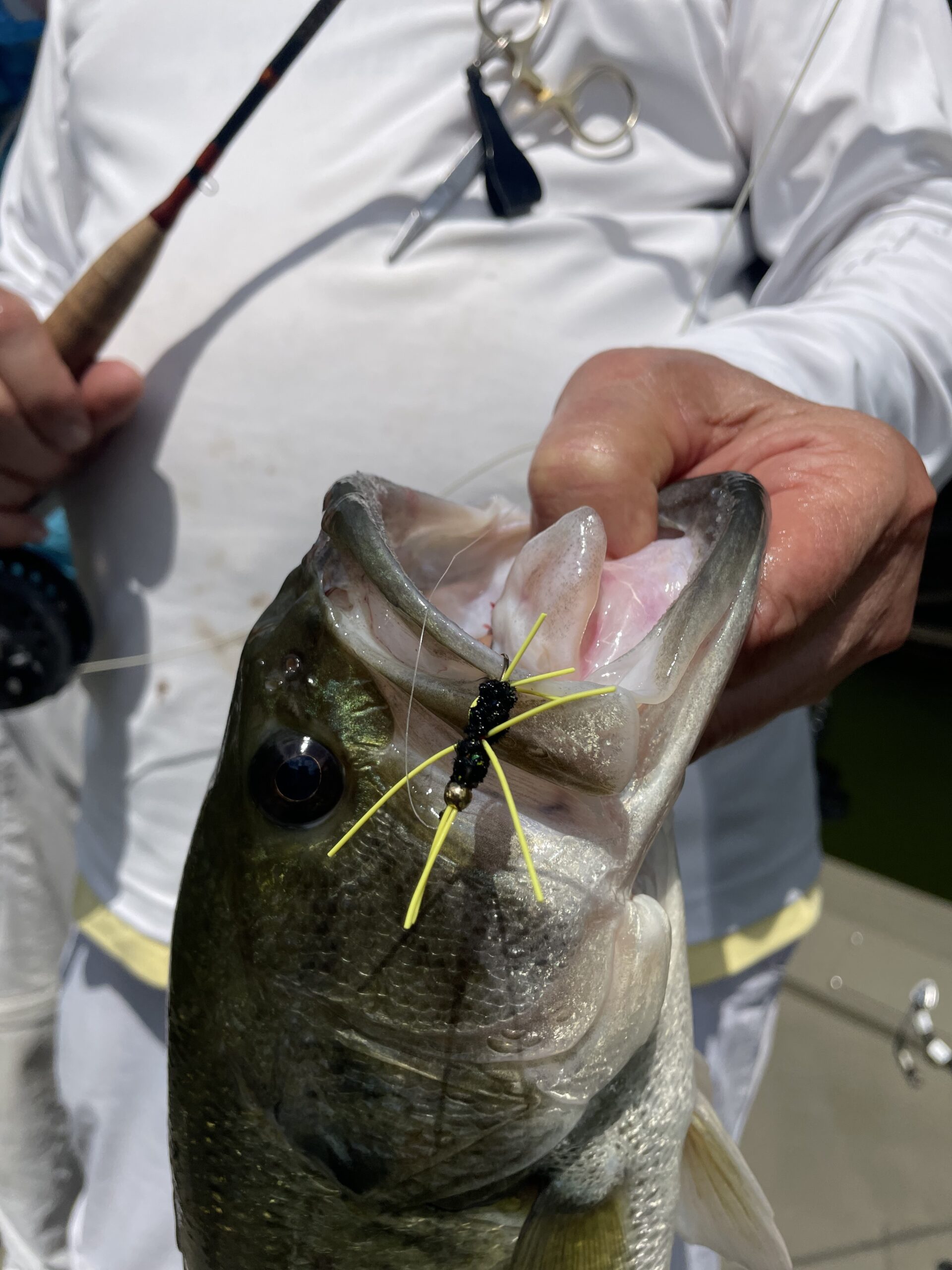If catching panfish or a bass on a flyrod is your idea of a sport fishing, read on, because this article is going to tell you about three patterns and a new hybrid you’ll want to try this summer.
As a devotee of the long rod tradition ever since my grandfather first put a bamboo rod and an automatic fly reel in my hands and said as he showed me how to cast it: “Here’s how to use this. Master it and all other fishing will come easy,” I’m here to say I love late May and June. That’s because this is when the shallows of my home lake (Lake Anna) teem with panfish on their beds plus lurking bass, and the clear water makes fly fishing for them easy and fun.
On Anna we have bluegills, redear (shellcrackers), long ear, green sunfish, warmouth and plenty of bass. Around the Commonwealth you’ll also find pumpkin seed, redbreast, flier and redeyes in various waters from mountain lakes to the brackish coastal rivers. They are all feisty on a three- or four-weight rod, except perhaps the lowly warmouth, which has a strong take but a rather catatonic fight.
Panfish, especially bluegill, can at times be very aggressive this time of year and attack baits normally associated with fishing for bass. Traditional panfish flies are on the small size, tied on a size 8 or 10 hooks, but don’t be afraid to try some on size 4 or 6 hooks. The larger flies make your offering a little more attractive to any nearby bass. But don’t be surprised if a bass grabs your small fly.
Panfish are not picky eaters. If it is in the water and appears alive, then it is fair game. Flies that are buggy in appearance are very effective. And those with rubber legs are the most effective. Something about those legs is irresistible. Terrestrial insects such as ants, beetles, crickets, grasshoppers, spiders, moths, and caterpillars are high on the menu. Waterborne prey includes aquatic worms, leeches, tadpoles, nymphs of mayflies, caddis flies, stoneflies, damselflies, dragonflies and anything else they can fit in their mouth or tear into small pieces. Shellcrackers are especially fond of freshwater mussels, hence their name.
Topwater strikes are the most exciting. Sometimes in clear, shallow water you can watch as a fish will give the fly a good look and then sip it in with hardly any disturbance. Other times they will hit it with bad intentions. Underwater strikes can also be varied. Sometimes it can be as subtle as the fish just opening his mouth and sucking in the fly or an aggressive “yank the rod from your hands” take. Either way, you need to pay close attention to your line.
Giving the fish a choice is sometimes the best option. A popper/dropper setup can be deadly. Even if they are not committed to your surface offering, their natural curiosity will bring them close enough to see the dropper fly. Hard for them to pass up an easy meal, plus the popper acts as a strike indicator. There is also a better than average chance of hooking two fish at the same time. Your dropper fly should only be 24 inches behind the popper to minimize tangling. Opening up your loop a little is also prudent. For a bass/panfish combination use a large popping bug or frog followed by a size 6 Wooly Bugger.
When retrieving your fly short strips spaced with long pauses is normally the best approach. Most panfish prey are not known for speed of movement. Minnows are a part of their diet, especially the larger specimens, so sometimes a long or steady retrieve will produce a reaction strike. Try varying your retrieve until you find the one that the fish want, remembering that it might change throughout the day.
The follow are three new patterns you may want to try on your home lake, their stories and some presentation/fishing tips to set you on the right course.
The Conway Dragonfly Nymph
Art Conway, a former professor of Biology and long-time guide on Chickahominy Lake discovered that the resident panfish had a particular fondness for the lake’s various species of dragonfly nymphs. He ties his nymphs in several color combinations, finding that some days the fish prefer one over another. He ties his flies on a jig style hook so the fly rides hook-up to lessen the chances of it hanging up on one of the many snags in the lake.
The Landry Magic Ant
After much experimentation, Ed Landry developed his Landry Ant, the only fly in existence that is patented by the Confederate States of America. Ask him and he will regale you with the history. The original version has a tungsten bead which causes it to sink quickly and have a jigging action on the retrieve, which makes it a great choice for when the water is on the deeper side. A beadless version works great for shallow water.
The RT Dropper And Frog
Lifelong fly fisher Robert Thomas likes a popper/dropper rig. He incorporates a wire loop at the back of his custom tied slider style popper. This tie-in point for the dropper fly makes for a lot less tangles than the usual method of tying to the bend of the hook. For the dropper he uses an unweighted modified Wooly Worm that incorporates rabbit fur for the tail. The RT Wooly Worm sinks slowly, begging to get eaten, and is perfect for fishing shallow shorelines.
Thomas has also crafted a weedless frog “fly” that features an upward facing hook between two lifelike legs made from ultrasuede designed by Pat Cohen on a body made from two foam popper heads. Two front legs are crafted from traditional rubber.
“It’s a design I’ve played around with that won’t get waterlogged like deer hair. I wanted something pretty much indestructible for northern pike, but it works great for bass in heavy cover,” Thomas said.
Yes, you can catch plenty of breathtakingly vibrant panfish on an imported popper or spongey spider, but it’s getting more and more difficult finding them anywhere locally and that is why we highly recommend you reach out to these three anglers and see if you can beg them to make you some of their patterns!



